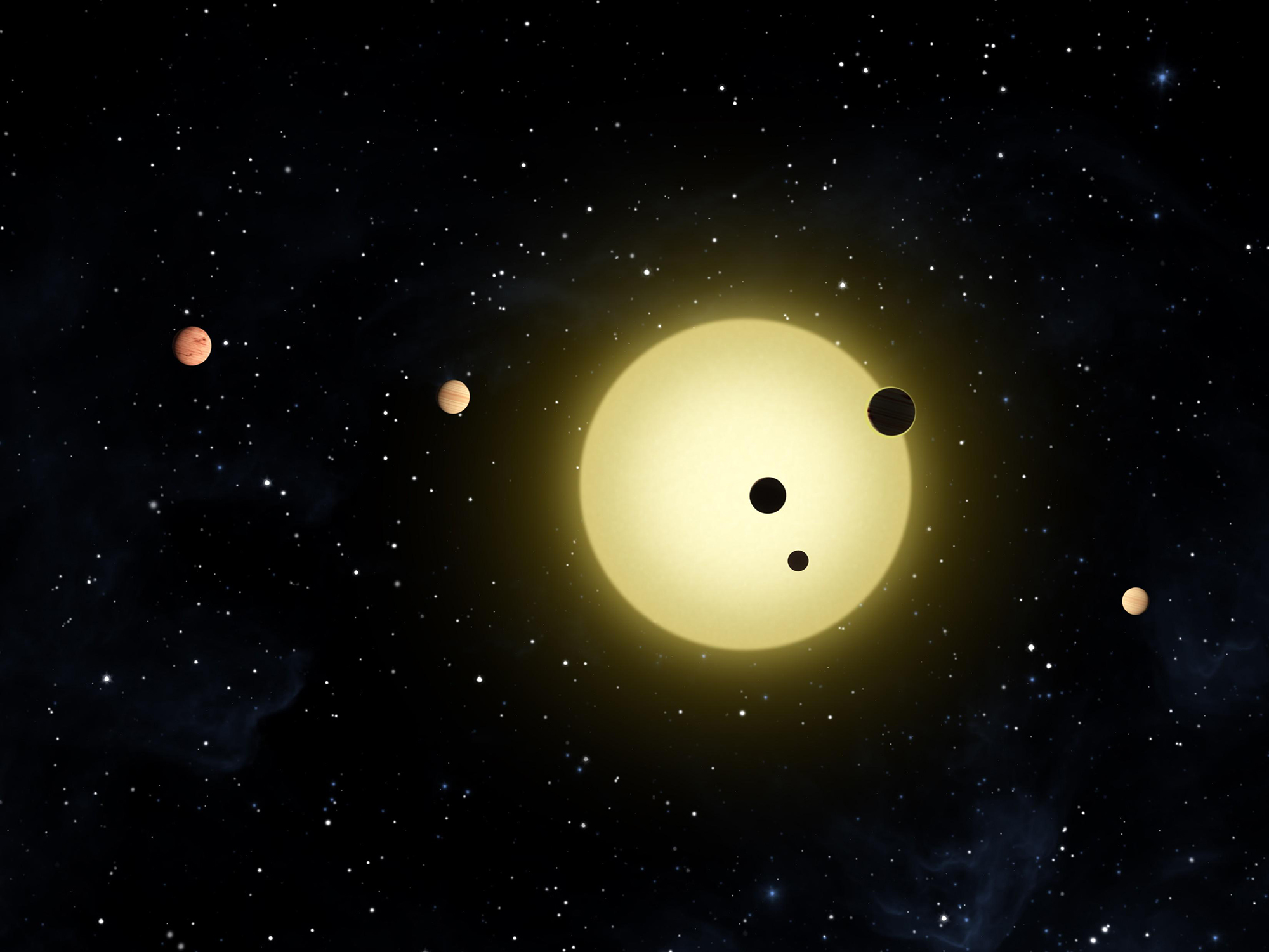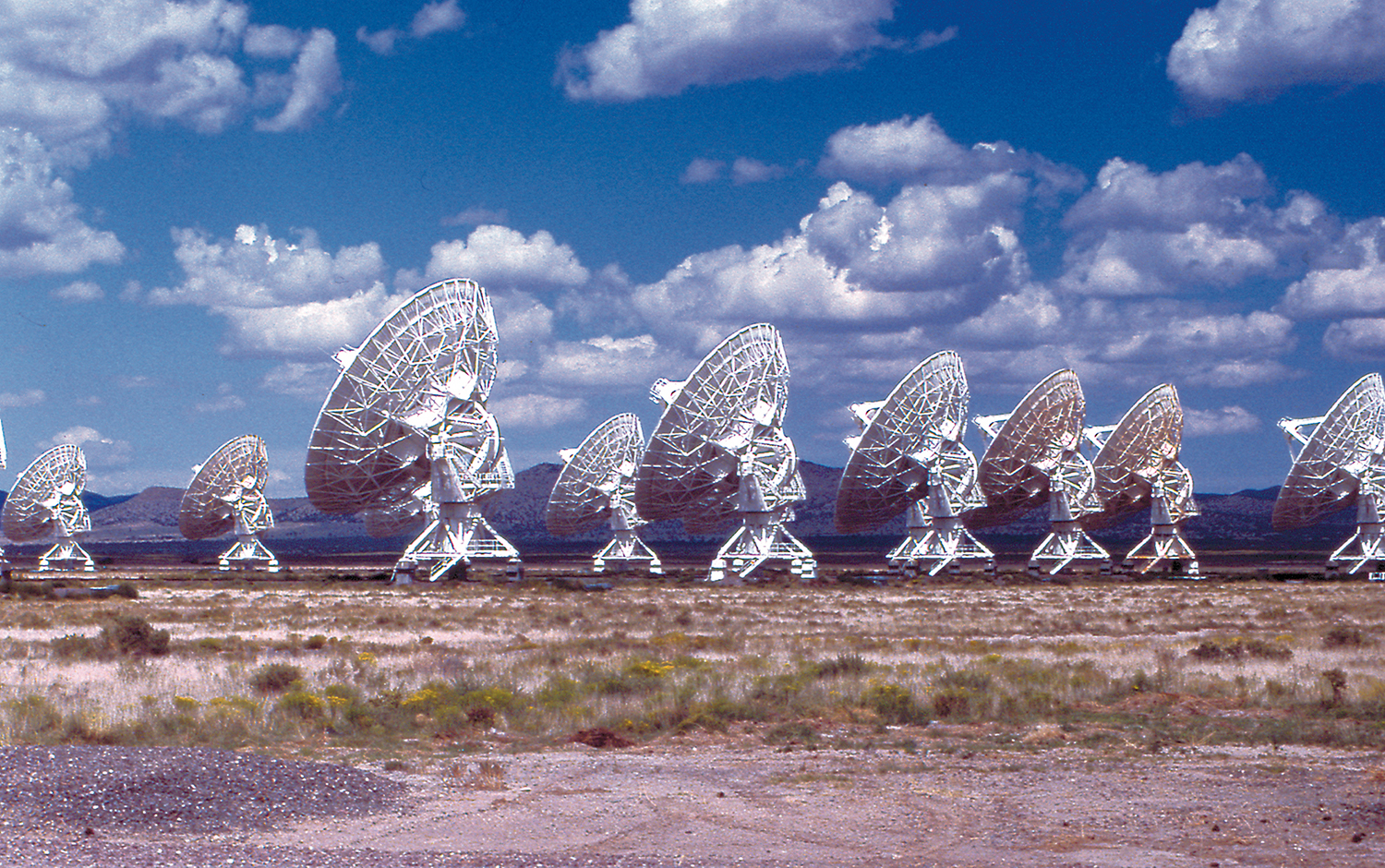Academic
Stellar Nurseries: Studying the birth of stars and planets
Vast numbers of stars filling the night sky have always given humans a sense of awe and humility.
As a Yip Visiting Fellow of Magdalene College, while immersed in the inspiration of Cambridge, I have been able to delve more deeply into the scientific investigation of how those stars come into being.
The irony of our modern age is that while professional telescopes are increasingly powerful, more people are personally deprived of seeing the night sky than ever before. Our careless lights in cities, neighborhoods, and parking lots create a kind of air glow that causes dim stars to fade from view. We are no longer able to experience the brilliance of innumerable stars filling the sky from horizon to horizon, inspiring shepherds, prophets, and poets. Yet at the same time, our sophisticated telescopes, combined with the worldwide explosion of internet access, have made deep space images of galaxies, stars, and planets accessible to everyone.
One such telescope familiar to people around the world is the Hubble Space Telescope. Named after famed astronomer Edwin Hubble, the telescope is a mission jointly supported by NASA and the European Space Agency. With five astronaut servicing missions to the telescope since its launch in 1990, the orbiting observatory has been kept fresh with new scientific instruments and supporting equipment. So even after 27 years of operation, the Hubble Space Telescope is currently at the peak of its scientific capabilities.
I have the privilege of being NASA’s Senior Project Scientist for the Hubble Space Telescope. The short version of my job description is “to ensure the maximal scientific return of the Hubble Space Telescope mission.” That is truly both a great honour and a formidable responsibility. Fortunately I am not alone; there are literally hundreds of people who contribute to the operation and oversight of the Hubble Space Telescope mission, along with thousands of scientists around the world who use the telescope for their research. My duties involve everything from oversight of the mission science budget and mundane policies to the joys of spreading the word about Hubble’s newest discoveries from across the cosmos.

Hubble is revealing to us a very active universe. Recent detections include colliding asteroids and moons with erupting water plumes in our solar system, light-bending distortions in space around massive clusters of galaxies, and galaxies so distant their light began its journey to us over 13 billion years ago, near the beginning time of the universe itself. Hubble is also revealing that stars are active participants in the shaping of the character of the universe. Stars form deep within dense pockets of gas and dust that populate the vast spaces between stars with galaxies like our own Milky Way. While these vast clouds are turbulent, denser pockets can form where the gravitational pull inside can overpower the turbulence, causing a collapse of material into a highly pressured core of dense gas, mostly hydrogen. The pressure in the center can be immense; if there is enough mass in the object, the core pressure will incite the fusion of hydrogen atoms, creating helium and releasing photons of light. This is essentially the birth of a star, with the fusion engine at the core enabling the eventual release of brilliant light from the surface.
In such clouds of star birth, new stars can form in isolation, but they can also form in multiples, like pairs or triplets or even clusters. Globular clusters near the center of our own Milky Way galaxy contain thousands of stars, including some of the oldest stars in the galaxy. Once formed, the fusion engine inside stars produces not only helium, but also heavier elements like oxygen and iron – elements we need for life. After millions or even billions of years, depending on the star’s mass, these products in the stellar atmosphere will be expelled into interstellar space as the star ages and burns out. Thus the next generation of stars forming from interstellar clouds will be enriched with some of these heavier elements. As new stars condense from this enhanced gas, they often are encircled by discs of dusty material formed from these heavier elements, like carbon and silicon; these orbiting discs of solid debris are the formation zones of planets.
The Hubble Space Telescope has imaged many such spectacular regions of stellar birth. Newly ignited clusters of stars are surrounded by their natal gas clouds, which are lit up into colorful nebulae by the light of the young massive newborn stars within. While the most massive stars form fastest, the more common lower mass stars, similar to our Sun, are often still in the process of forming deep within the surrounding dense dusty gas. Therein lies the challenge for observing these embedded phenomena: most stars spend their formation period buried deep within interstellar clouds that obscure the view for any visible-light telescope, including Hubble.

My research therefore involves using a suite of diverse telescopes that, by using longer, invisible wavelengths of light, can peer into these enshrouded interstellar clouds and glimpse the formation of stars. I use radio telescopes, such as the Very Large Array in New Mexico, and the Atacama Large Millimeter Array in South America, to study the dynamics of the gas that feeds the formation of stars. With such tools, we can detect the structure of the interstellar clouds, the infalling material that is accreting onto new stars, and the powerful outflows that are propelled by the infant stars as infalling material interacts with their winds and magnetic fields. Hubble itself can peer into some of these obscured regions thanks to the infrared-light capabilities of its newest camera, the Wide-Field Camera 3.
I am particularly interested in protostars at the very earliest stages of their formation, that is, when most of the material that will eventually be in the star is still in a circumstellar “envelope”. If we can understand better the environmental conditions that allow such objects to develop into fully mature stars with planetary systems, we have a better sense of how our own solar system formed and which kinds of interstellar cloud environments are more conducive to star and planet formation.
My time as a Yip Visiting Fellow of Magdalene College enabled a rich and rare opportunity to concentrate on this study of star formation while interacting with the world’s top astrophysicists. The University of Cambridge boasts one of the top research institutions in the world, the Institute of Astronomy (IoA). Because I was welcomed to spend my days there as a Visiting Scholar, I was able to give multiple talks there about the Hubble Space Telescope program and about my own research, and I was able to interact with several active research groups, including renowned scientists from the adjacent Cavendish Radio Astrophysics Laboratory. IoA boasts a very active group concentrating on star formation and in particular the mechanisms of planet formation with the dusty discs that form around stars. Planet formation is a “hot topic” in astrophysics these days, because planets orbiting stars other than our Sun, i.e. “exoplanets”, are now rather suddenly understood to be common, thanks to recent surveys from specialised facilities like NASA’s Kepler Space Telescope. In fact, it now appears that nearly every star in our galaxy has a planet, on average. Some have none, and some (like our Sun) have several.
But with over 200 billion stars in the Milky Way, this implies a huge number of planets. If even a small fraction of them have Earth-like conditions, the possibilities of life existing across the galaxy, and maybe all galaxies, suddenly becomes tantalisingly possible! One way of understanding whether Earth-like environments are common is to better understand how and where Suns and Earths most likely form. Thus the research at the IoA is invigorated with early-career scientists eager to investigate the origins of stars, planets, and even life. The related new field of astrobiology endeavours to understand the breadth of environments in which life can thrive, and to determine how remote sensing (like with telescopes) could discern biological activity on a distant exoplanet.

The gift to me of time and inspiration from being in such an environment resulted in two research publications, including a general overview of new techniques in the observation of star forming regions, and a more detailed paper on a particular young protostar system known as HH111. This intriguing source includes two protostars that are going through the common adolescent phase of expelling fast outflowing jets, via their magnetic fields, while they are accreting gas and growing into stars. Using data from the Very Large Array radio observatory, my research team found a dense core of gas right in the path of these fast outflows, with observable effects from the interaction. Thus we have been able to show that protostars in the process of formation can disrupt the surrounding environment to such a degree that other, slower-forming stars may be unable to fully form. If such systems are common, it may imply that small stars with Earth-like planets may not form easily in environments where other stars have started forming and disrupting the global environment of the stellar nursery.
While in Cambridge, I found that enthusiastic interest in the richness of the universe extended far beyond the Institute of Astronomy. I was invited by the British Science Association to talk about NASA’s Search for Exoplanets and Life Beyond Earth as part of their science fiction film festival, and the audience was intrigued at the growing prospect of finding habitable worlds beyond our own. The Faraday Institute for Science and Religion at St. Edmund’s College invited my reflections on Investigating a Fruitful Universe. And Magdalene College itself encouraged several presentations, including a Chapel talk on the awe and insights we glean from the heavens, and a public lecture on discoveries with the Hubble Space Telescope.
For me, however, the greatest inspiration of my time as a Yip Fellow came through my interactions with the Fellows, students, and staff of Magdalene College. The evening conversations with poets, literary experts, musicians, historians, business experts, linguists, engineers, and other scientists, just to name some of the disciplines I encountered, were priceless interactions. I truly experienced our diverse disciplines, and our varied international experiences, enriching, informing, and broadening each other’s perspectives. While studying the birth of stars and planets, the warmth and richness of Magdalene College has forever enriched my universe.
Dr Jennifer Wiseman
Dr Jennifer Wiseman visited Magdalene College as a Yip Fellow for the Easter Term of 2017. She is a senior astrophysicist at the NASA Goddard Space Flight Center where she serves as the Senior Project Scientist for the Hubble Space Telescope. Previously, Jennifer headed Goddard’s Laboratory for Exoplanets and Stellar Astrophysics.
Jennifer’s scientific expertise is centered on the study of star forming regions in our galaxy using a variety of tools, including radio, optical and infrared telescopes.
Header Image: The Westerlund 2 Star Cluster, as imaged with the Hubble Space Telescope. The recently formed cluster of massive stars in the centre is cradled by its colourful natal cloud of remaining ionised gas and dust, in which smaller stars are continuing to form. Image Credit: NASA, ESA, the Hubble Heritage Team (STScI/AURA), A. Nota (ESA/STScI), and the Westerlund 2 Science Team.